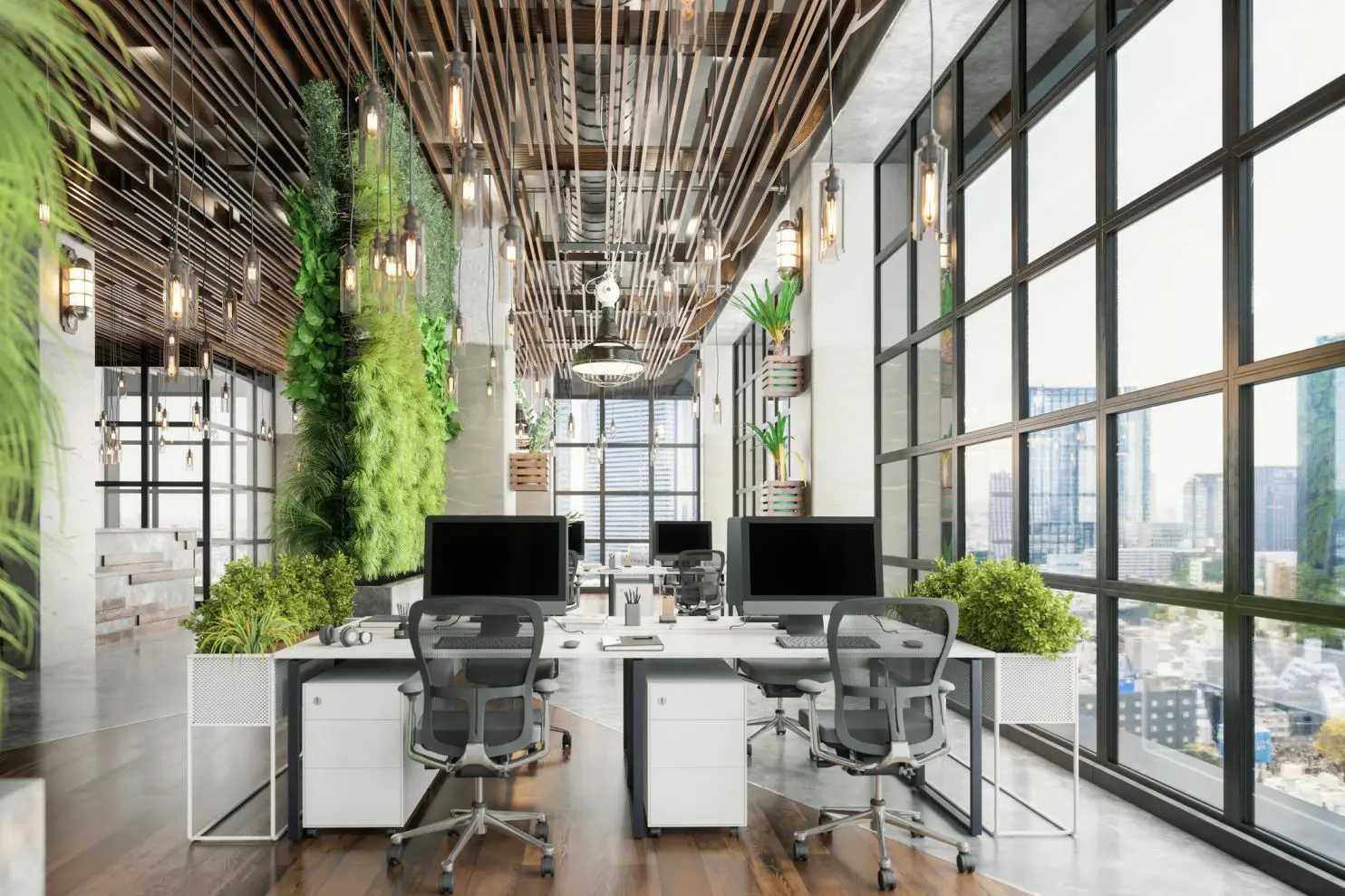
14 Jul Workplace In Focus: Sustainable Offices
As organizations start to prioritize corporate social responsibility (CSR) targets, sustainability is becoming increasingly important to businesses across the U.S and around the world. It’s not enough for companies to solely work to generate profit: citizens and employees expect modern businesses to operate in an ethical and socially responsible manner as well.
Sustainable office design is a key way in which businesses can strive towards meeting their energy efficiency goals. By making eco-conscious choices around building materials, natural light optimization, water usage and recycling provisions, companies can build a workplace that’s designed to promote healthy, sustainable working patterns for the future.
What is sustainable office design?
Sustainable office design prioritizes energy and waste reduction through green building innovation. Key elements of sustainable architectural design include the use of environmentally-friendly materials, recycling provisions, energy-saving infrastructure, lighting, ventilation and wellness-first design methods.
Why workplaces need to consider sustainability
The demands of modern businesses are changing. Sustainability is now a key objective for companies striving to inhabit greener buildings in order to help address the climate crisis and reduce their carbon footprint. But sustainability targets need to be put into action and that’s where green office design plays a vital part for businesses who want to make an impact.
The workplace is a company’s physical home and should reflect your broader values and ambitions. So if your business is serious about sustainability, then taking vital steps to demonstrate your commitment to energy reduction will benefit not only the environment, but your people and culture as well.
What are the benefits of sustainable offices?
A sustainable business needs a sustainable design and fit-out vision. Investing in an environmentally-conscious workplace will help you significantly cut costs, improve your carbon footprint, reduce waste and create a culture of sustainability and positive wellbeing in your workplace.
Sustainable office design also improves productivity and performance in the workplace. Taking steps to reduce energy consumption is an important part of people’s personal lives, so if you want your employees to feel a positive connection with their working environment, it’s important to ensure they’re carrying out their duties in a responsible environment where they feel comfortable and satisfied with the impact they’re having on the environment.
3 key features of sustainable offices
Responsible Materials
Opt for sustainable building materials with non-toxic, low volatile organic compounds (VOC) emitting properties. Essential building supplies like paint, carpets and adhesives can contain VOCs which release harmful chemicals into the air. Choosing sustainable alternatives will improve air quality and ventilation, making your workplace safer and more sustainable for your people.
Other ways to incorporate responsible materials in your workplace is through selecting locally-sourced materials, recycled and repurposed furniture and considering the sustainability credentials of different types of materials that the building will require. Sustainability is all about future-proofing your workplace too, so we always recommend investing in furniture that’s durable, easy to maintain and adaptable to change.
Lighting
The right lighting can transform the workplace, with studies revealing optimized lighting will enhance wellbeing by reducing common work-related health complaints like tension headaches and eyestrain, whilst also improving concentration levels and elevating people’s moods.
Sustainable office lighting always prioritizes natural light, ensuring the building takes advantage of as much natural daylight as possible. Artificial lighting should be implemented with care; optimizing the use of sensor-controlled lighting and energy-efficient LEDs are effective ways to install sustainable lighting in your workplace.
Learn how our suppliers are driving lighting innovation in our Design Talk interview
Ventilation
Indoor air quality is an essential feature of a healthy, sustainable workplace. Choosing low-emission materials and reducing indoor pollutants improves ventilation levels and air quality, and in turn boosts health and wellbeing for users of the space.
Another way to improve air quality is through plants and indoor greenery. Not only do indoor plants purify the air, they’re a key feature of biophilic design which mimics the effects of nature indoors, proven to boost health, wellbeing and productivity in the workplace.
Get in Touch
Want to know how sustainable office design can transform your workplace? Get in touch and speak with an award-winning WELL AP workplace designer today.



















